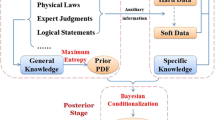Abstract
Understanding the interactions between the anthroposphere and the geosphere, such as natural hazards, land degradation, quantitative and qualitative impacts on ground and surface waters, is a challenging task. The monitoring and modelling of these interactions can be characterized by high uncertainties in data and models, especially when considering urban areas or locations near engineering infrastructures. Technological and scientific advancements, including remote sensing, geophysical prospecting, drilling equipment, and information technology, have contributed to enhancing our current understanding of these interconnected dynamics. The availability of increasingly large datasets provides better insights into the mechanisms that govern these interactions, but it also adds complexity to monitoring, modeling, and forecasting procedures. From this viewpoint, the utilization of advanced geocomputational methodologies, such as machine learning, geostatistics, pattern recognition, geomorphometry, and other computational-based approaches, plays a pivotal role.
Similar content being viewed by others
References
Ardakani AHH, Shojaei S, Shahvaran AR et al (2022) Selecting potential locations for groundwater recharge by means of remote sensing and GIS and weighting based on Boolean logic and analytic hierarchy process. Environ Earth Sci 81:8
Arulbalaji P, Padmalal D, Maya K (2020) Impact of urbanization and land surface temperature changes in a coastal town in Kerala. India Environ Earth Sci 79:400
Camuffo D (2022) A discussion on sea level rise, rate ad acceleration. Venice as a case study. Environ Earth Sci 81:349
Camuffo D, Bertolin C, Schenal P (2017) A novel proxy and the sea level rise in Venice, Italy, from 1350 to 2014. Clim Change 143:73–86
Conoscenti C, Martinello C, Alfonso-Torreño A et al (2021) Predicting sediment deposition rate in check-dams using machine learning techniques and high-resolution DEMs. Environ Earth Sci 80:380
Crutzen PJ, Stoermer EF (2000) The anthropocene. IGBP Newsl 41:17–18
Daya SBS, Cheng Q, Agterberg F (2018) Handbook of mathematical geosciences: fifty years of IAMG. Springer, pp 1–914
Ferrante C, Bianchini LC, Ciampoli L, Benedetto A et al (2021) Non-destructive technologies for sustainable assessment and monitoring of railway infrastructure: a focus on GPR and InSAR methods. Environ Earth Sci 80:806
Hastie T, Tibshirani R, Friedman J (2001) The elements of statistical learning: data mining, inference, and prediction. Springer
Kanevski M, Maignan M (2004) Analysis and modelling of spatial environmental data. EPFL Press
Moribayashi S, Maruo Y (1980) Basement topography of the Kathmandu Valley, Nepal—an application of the gravitational method to the survey of a tectonic basin in the Himalaya. J Jpn Soc Eng Geol 21:30–37
Pereira P, Brevik E, Trevisani S (2018) Mapping the environment. Sci Total Environ 610–611:17–23
Ren J, Zhang J, Wang D (2023) Validation of an analytical model of groundwater velocity based on laboratory test and numerical simulation. Environ Earth Sci 82:258
Steffen W, Richardson K, Rockström J, Cornell SE, Fetzer I, Bennett EM, Biggs R, Carpenter SR, De Vries W, De Wit CA, Folke C, Gerten D, Heinke J, Mace GM, Persson LM, Ramanathan V, Reyers B, Sörlin S (2015) Planetary boundaries: guiding human development on a changing planet. Science. https://doi.org/10.1126/science.1259855
Strobl PA, Bielski C, Guth PL, Grohmann CH, Muller J, López-Vázquez C, Gesch DB, Amatulli G, Riazanoff S, Carabajal C (2021) The digital elevation model intercomparison experiment Demix, a community-based approach at global dem benchmarking. Int Arch Photogramm Remote Sens Spat Inf Sci XLIII-B4-2021:395–400. https://doi.org/10.5194/isprs-archives-XLIII-B4-2021-395-2021
Titti G, Borgatti L, Zou Q et al (2021) Landslide susceptibility in the belt and road countries: continental step of a multi-scale approach. Environ Earth Sci 80:630
Trevisani S, Omodeo PD (2021) Earth scientists and sustainable development: geocomputing, new technologies, and the humanities. Land 10(3):294
Trevisani S, Omodeo PD (2023) Mapping transitions and alterations in complex environments. In: Hensel MU, Sunguroğlu Hensel D, Binder CR, Ludwig F (eds) Introduction to designing environments. Designing environments. Springer, Cham. https://doi.org/10.1007/978-3-031-34378-0_3
Trevisani S, Pettenati F, Paudyal S, Sandron D (2021) Mapping long-period soil resonances in the Kathmandu basin using microtremors. Environ Earth Sci 80:265
Acknowledgements
The Guest Editors are sincerely grateful to all the referees and authors for their contribution to improve the quality of the research published in this Special Issue. A sincere acknowledgement goes to the Editor-in-Chief Olaf Kolditz and the managing Editor Barbara Kolditz for the opportunity and support provided across the whole process.
Funding
No founding was provided for this research.
Author information
Authors and Affiliations
Contributions
S.T., M.C. and F.T. wrote the main manuscript text.
Corresponding author
Ethics declarations
Competing interests
The authors declare no competing interests.
Additional information
Publisher's Note
Springer Nature remains neutral with regard to jurisdictional claims in published maps and institutional affiliations.
Rights and permissions
Springer Nature or its licensor (e.g. a society or other partner) holds exclusive rights to this article under a publishing agreement with the author(s) or other rightsholder(s); author self-archiving of the accepted manuscript version of this article is solely governed by the terms of such publishing agreement and applicable law.
About this article
Cite this article
Trevisani, S., Cavalli, M. & Tosti, F. Editorial topic collection: “Geosphere-anthroposphere interlinked dynamics: geocomputing and new technologies”. Environ Earth Sci 82, 507 (2023). https://doi.org/10.1007/s12665-023-11172-y
Received:
Accepted:
Published:
DOI: https://doi.org/10.1007/s12665-023-11172-y




